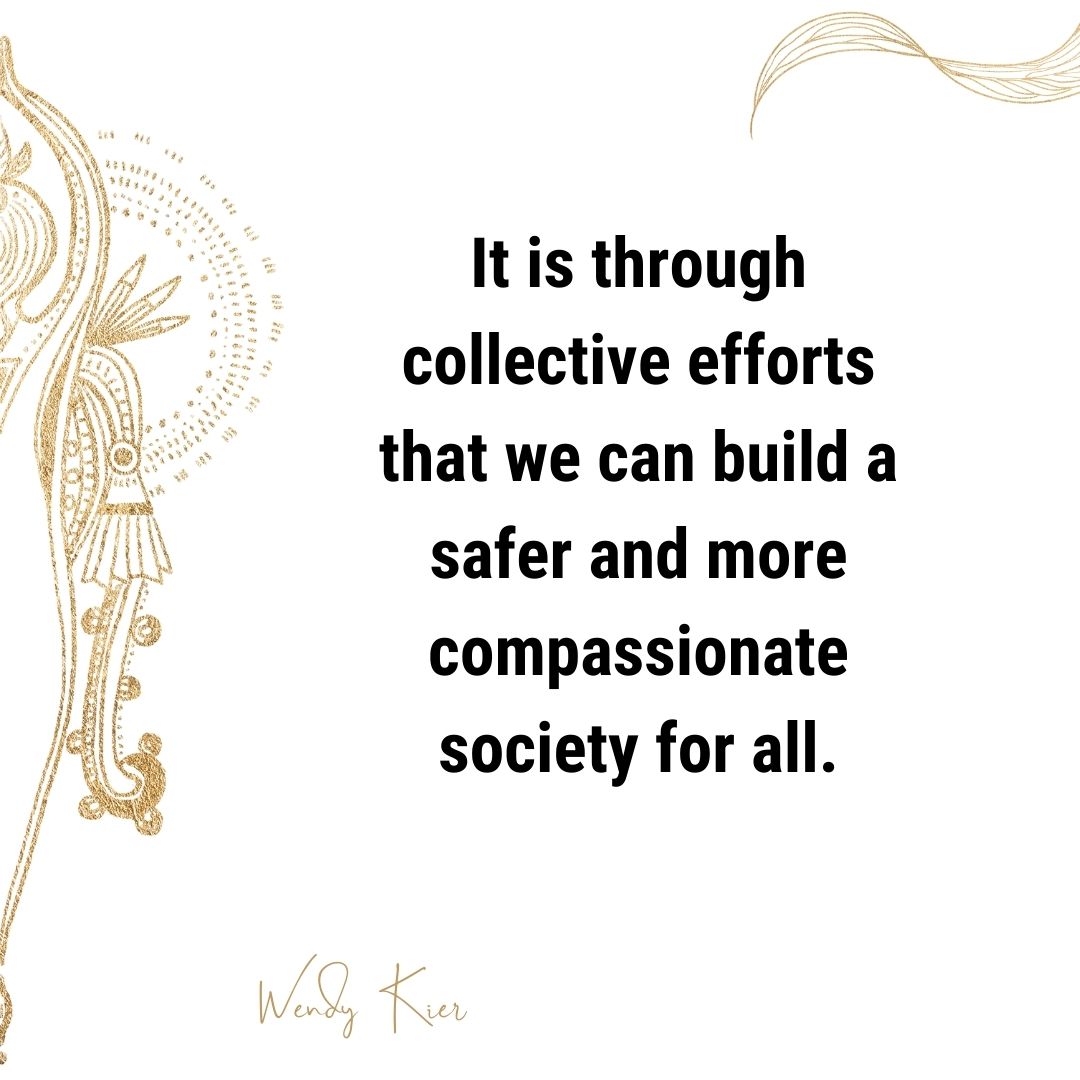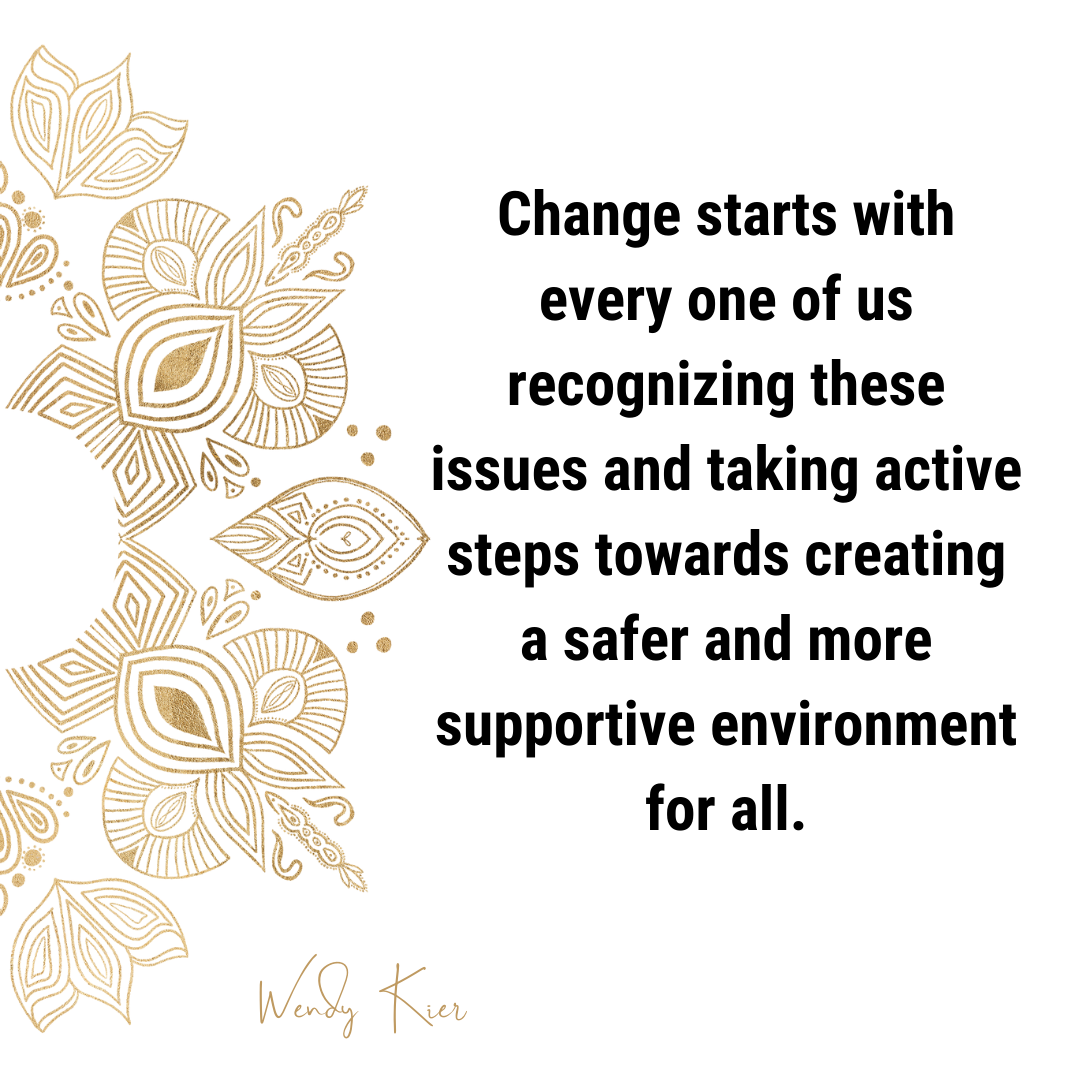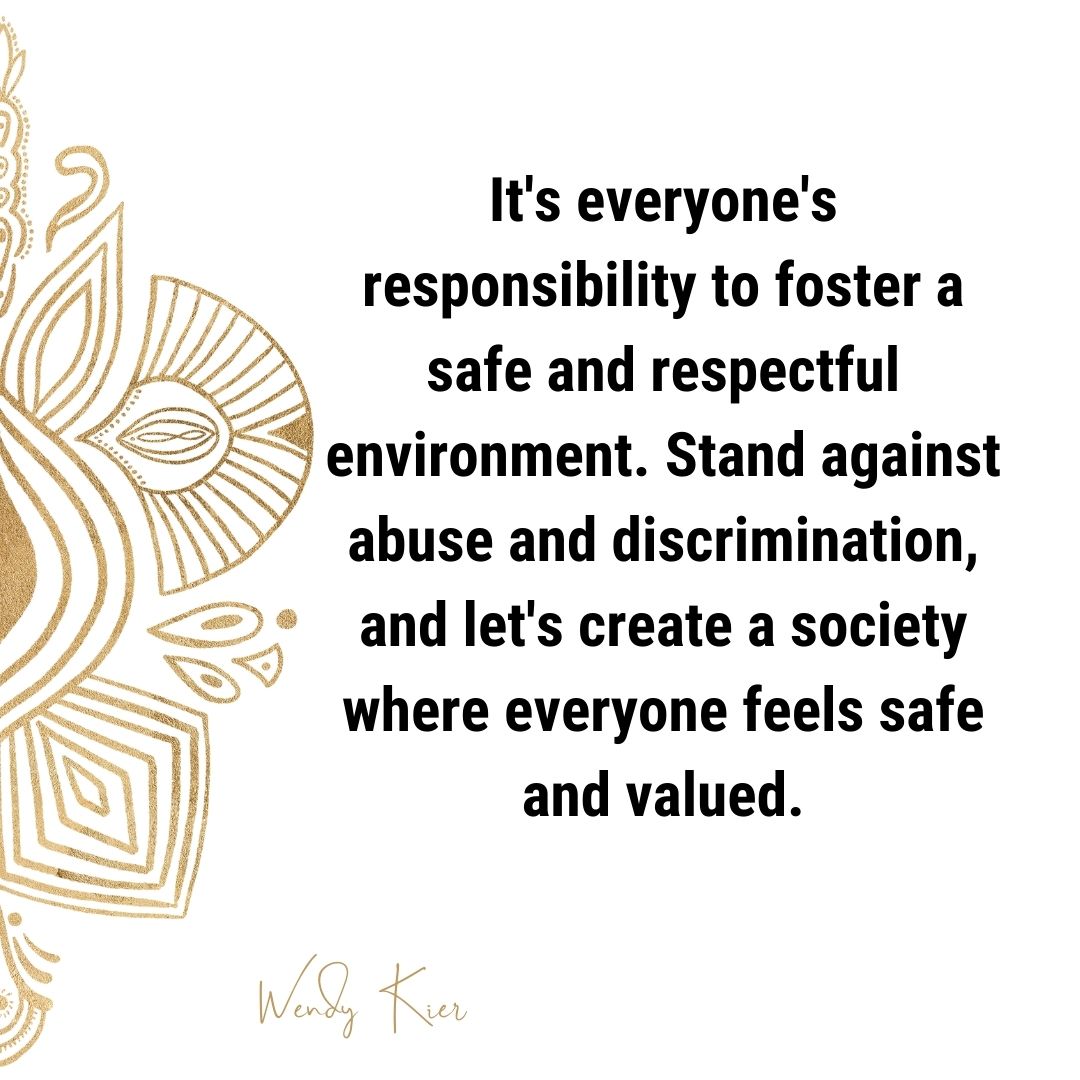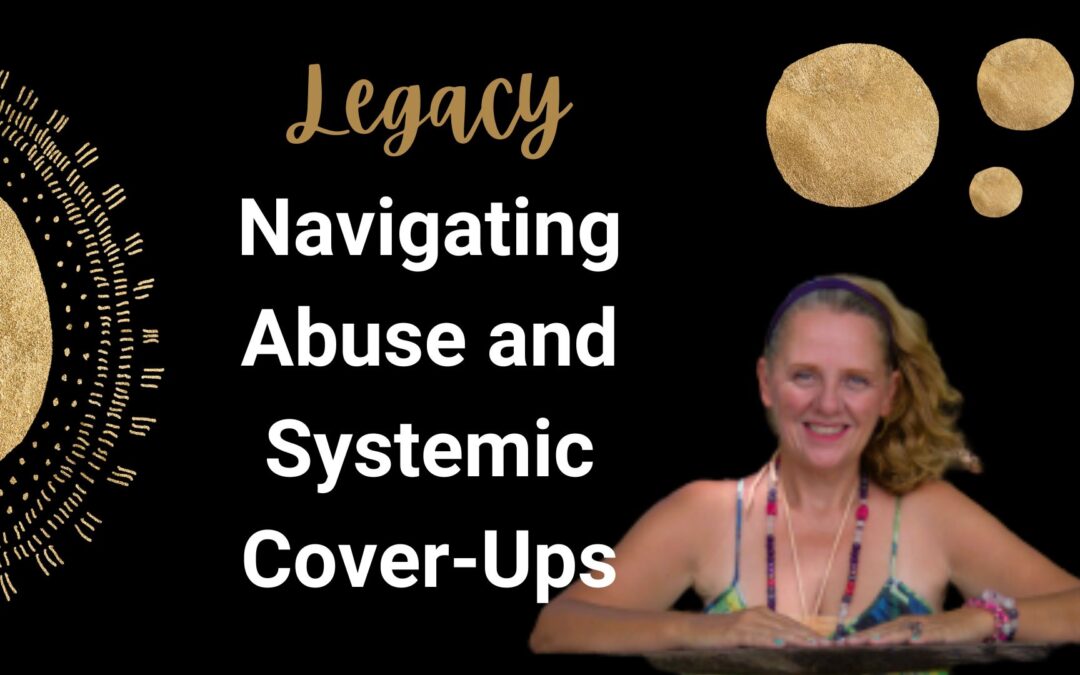Exposing Silent Observers:
Growing up in local authority care during my early years, I was exposed to harsh realities that no child should ever have to confront. The abuse that I endured then still echoes painfully in my mind today. A striking parallel to this is drawn from the recent scandal involving Phillip Schofield. As allegations against him unfold, I’m reminded of how those around me during my childhood turned a blind eye to the abuse happening within our midst, resulting in a profound betrayal of trust.
My ordeal did not end there. Instead of achieving justice when I sought to expose the abuse, I found myself battling an insidious culture of cover-up. The very individuals who were meant to act as my guardians prioritized preserving their own reputation and the institution’s image over the safety and well-being of vulnerable children like me. My attempts to voice my concerns were met with resistance, casting me as a scapegoat and penalizing me for having the audacity to bring attention to these grievous wrongdoings.
A particular incident remains etched in my memory—a complaint I made as a teenager, which fell on deaf ears within the children’s home. The lack of action in response to my plea left me feeling abandoned and betrayed. I was horrified to realize that abuse was being systematically concealed, making me question why such acts of cruelty were being covered up and allowed to continue unchecked. Witnessing similar patterns play out on a larger societal scale only served to underscore the urgency to address these systemic failures.
As I transitioned into adulthood, I came to realize that the patterns of my past were not confined to the children’s home where I was raised. I encountered organizations exhibiting similar behaviour, but this time, in the context of dyslexia disability discrimination. I watched as colleagues closed ranks, banding together to protect their own interests while neglecting justice. Brave individuals who stood up to report discrimination were ostracized and faced severe backlash, a chilling echo of my own experiences when I chose to speak up.
This journey led me to understand that this problem extends beyond my personal experiences or the children’s home. It’s a pervasive, systemic issue that infects various facets of our society. As I navigated these situations, I grasped the importance of my own voice and experiences. Sharing my story and raising awareness about these systemic issues became an imperative mission for me, with the hope of sparking change and protecting others from enduring similar suffering.
Despite the adversity that has marked my life, it has instilled in me a profound sense of purpose. I have seen the worst outcomes when those in power prioritize self-preservation over the welfare of vulnerable individuals. But I have also witnessed the resilience that can emerge in the face of such adversity. My commitment is to use my experiences as a catalyst for change, with the hope that by sharing my story, I can illuminate these societal failures, initiate meaningful conversations, and ultimately, prevent further harm. The Phillip Schofield scandal, among others, serves as a grim reminder of the need for this ongoing battle.
Unmasking Grooming: Unveiling the Far-Reaching Consequences and the Path to Change:
The impact of grooming and abuse extends beyond the individuals directly involved, affecting society as a whole. It is crucial to recognize and address this broader impact.
Here are some points to consider:
1. Damage to individuals: Grooming and abuse inflict profound emotional, psychological, and physical harm on survivors. These traumatic experiences can have long-lasting effects on their mental health, self-esteem, and overall well-being. The healing process is often complex and requires extensive support.
2. Disrupted families and relationships: Grooming and abuse can tear apart families and relationships, causing deep rifts and loss of trust. Survivors may struggle with forming healthy relationships and may experience difficulties in establishing secure attachments with others.
3. Community erosion: Grooming and abuse erode the social fabric of communities. When such incidents occur, community trust and cohesion are shattered. Fear, suspicion, and a breakdown in communication can hinder community development and engagement.
4. Inter-generational impact: The consequences of grooming and abuse can span generations. Survivors may face challenges in parenting and providing a safe environment for their own children. The cycle of abuse can perpetuate if interventions and support systems are not in place.
5. Institutional accountability: Instances of grooming and abuse often reveal institutional failures and a lack of accountability. The reputation of organizations, such as schools, religious institutions, or care facilities, can be tarnished, resulting in a loss of public trust. Holding institutions accountable is crucial to prevent future incidents and ensure the safety of vulnerable individuals.
6. Preventive measures: Creating a culture that prioritizes prevention, support, and accountability is vital. This involves comprehensive education programs that promote healthy relationships, consent, and awareness of grooming behaviors. It also requires robust policies and procedures within institutions to prevent and respond effectively to abuse allegations.
7. Support and rehabilitation: Society must provide accessible and specialized support services for survivors. Counseling, therapy, and support groups can aid in the healing process and empower survivors to reclaim their lives. Offering a supportive environment helps survivors rebuild their sense of safety, trust, and self-worth.
8. Breaking the silence: Open dialogue about grooming and abuse is essential to dismantle the culture of silence that allows these issues to persist. Encouraging survivors to speak out, sharing their stories, and amplifying their voices can challenge societal norms and promote understanding and empathy.
By addressing the impact of grooming and abuse on individuals, families, communities, and institutions, society can work towards creating a culture that prioritizes prevention, support, and accountability.

10 Essential Prevention Strategies to Combat Grooming
1. Education and Awareness: Promote comprehensive education programs that teach individuals, especially vulnerable populations, about the signs and tactics of grooming. By raising awareness, people can recognize the red flags and understand the importance of setting and maintaining healthy boundaries. Encourage an understanding of the psychological manipulation used by groomers, helping individuals comprehend the complexities of grooming dynamics.
2. Empower Potential Victims: Encourage individuals to trust their instincts and empower them to assert their boundaries. Teach self-advocacy skills, such as assertiveness and effective communication, to help potential victims recognize and resist manipulative behaviour. Foster a sense of empathy and compassion towards potential victims, understanding the challenges they may face when confronted with grooming situations.
3. Foster Supportive Environments: Create safe spaces within families, communities, and institutions where open conversations about grooming can take place without judgment or victim-blaming. Encourage reporting mechanisms and support systems that ensure individuals feel heard, believed, and supported. Promote empathy and compassion in these environments, acknowledging the courage it takes for survivors to come forward and validating their experiences.
4. Empathy and Bystander Intervention: Foster a culture of empathy and encourage bystander intervention. Encourage individuals to speak up if they witness concerning behavior, ensuring they have the knowledge and resources to intervene safely and support potential victims. Cultivate an environment where individuals understand the importance of compassionately and proactively looking out for one another.
5. Collaboration and Multi-Sectoral Approach: Addressing grooming requires a collaborative effort involving various stakeholders. Encourage cooperation among schools, law enforcement agencies, community organizations, and social services to develop prevention strategies, share information, and respond effectively to grooming cases. Promote empathy and compassion in these collaborations, recognizing the collective responsibility to protect vulnerable individuals and the importance of supporting survivors with sensitivity and care.
6. Internet and digital safety: Acknowledge the role of the internet and digital platforms in facilitating grooming. Educate individuals, especially children and teenagers, about online safety, the potential risks of online interactions, and the importance of privacy settings. Empower individuals to recognize and report any suspicious or inappropriate online behavior.
7. Trauma-informed approach: Incorporate a trauma-informed approach into prevention strategies. Understand the impact of trauma on survivors and ensure that support systems are sensitive to their needs. Provide trauma-informed training for professionals working with vulnerable populations, equipping them with the skills to respond compassionately and effectively.
8. Cultural sensitivity and inclusivity: Recognize that grooming can occur across diverse cultural contexts and communities. Develop prevention strategies that are sensitive to cultural differences and tailored to specific communities. Involve community leaders and organizations in prevention efforts to ensure inclusivity and culturally appropriate responses.
9. Continual evaluation and improvement: Regularly evaluate prevention strategies to assess their effectiveness and identify areas for improvement. Seek feedback from survivors, professionals, and communities to refine and enhance the approach. Stay informed about emerging research and best practices in preventing grooming and adapting strategies accordingly.
10. Long-term support and rehabilitation: Recognize that prevention is an ongoing process and requires long-term support for survivors. Advocate for accessible and specialized services that offer counseling, therapy, and support groups for survivors to aid in their healing and recovery journey. Focus on empowering survivors to reclaim their lives and find resilience beyond their experiences.
By implementing these prevention strategies with a foundation of understanding, empathy, and compassion, we can create a society that is better equipped to recognize and combat grooming. Through education, empowerment, support, and collaboration, we can foster an environment where individuals are informed, vigilant, and resilient against the tactics of manipulative abusers.
.
Here Are Some Potential Emotional Effects That Survivors of Such Experiences May Face:
Post-Traumatic Stress Disorder (PTSD): People who have experienced traumatic events such as abuse can develop PTSD, characterized by symptoms such as flashbacks, nightmares, severe anxiety, and uncontrollable thoughts about the event.
Depression and Anxiety: Long-term exposure to abuse can lead to mental health disorders such as depression and anxiety. Individuals may experience persistent feelings of sadness, loss of interest in activities they once enjoyed, fatigue, and excessive worry.
Trust and Relationship Issues: Experiencing betrayal by those who were supposed to protect them can cause survivors to have difficulty trusting others. This can impact their ability to form and maintain healthy relationships.
Low Self-Esteem and Self-Worth: Abuse often leads to feelings of worthlessness and a diminished sense of self-esteem. This can influence how survivors view themselves and their value.
Guilt and Shame: Survivors may blame themselves for the abuse or for not being able to stop it. Feelings of shame and guilt can persist long after the abuse has ended.
Fear and Hypervigilance: Constant fear for their safety can lead to a state of hypervigilance, where the person is always on high alert for danger.
Disassociation: This is a coping mechanism where the person disconnects from their thoughts, feelings, memories or sense of identity. It is a way to mentally escape from the traumatic situation.
Anger and Resentment: Survivors may harbour long-term anger and resentment towards their abusers and those who ignored or covered up the abuse.
The long-term emotional effects could be varied and deeply personal, depending on many factors including the individual’s resilience, access to support, the severity and duration of the abuse, and many other factors.
Seeking help from a mental health professional can provide survivors with the tools they need to process these feelings, cope with their experiences, and embark on the path towards healing and recovery.
- Pervasive Systemic Issues: From my personal experiences, I have come to realize that systemic issues like abuse and discrimination are not confined to specific environments like the children’s home I grew up in. They are deeply ingrained patterns prevalent in various sectors of society, indicating a need for more extensive and broad-based interventions.
- Culture of Silence and Cover-ups I have lived the damaging culture of silence that often surrounds abuse, leading to cover-ups that protect abusers and the institution’s reputation at the expense of the victim’s well-being. This betrayal magnifies the trauma of those affected.
- Victim Penalization: From my encounters, it is clear that instead of offering support, systems often penalize victims who voice their concerns. This act of punishing those who speak out maintains the status quo and perpetuates the cycle of abuse.
- Parallel Patterns in Different Contexts: I noted a recurrence of similar harmful behaviours across different contexts, such as dyslexia disability discrimination in workplaces. These parallel patterns show how systemic failures can manifest in various forms, reinforcing the need for systemic solutions.
- The Importance of Speaking Out: Despite facing retaliation and backlash, my journey underscores the importance of speaking out. Sharing personal experiences like mine can raise awareness, spark change, and protect others from enduring similar sufferings.
- Resilience and Purpose Amid Adversity: In the face of adversity, my story illustrates the possibility of forging a sense of purpose and resilience. Harnessing personal experiences as a catalyst for change can expose societal failures and initiate important conversations.
- The Role of High-Profile Cases: High-profile cases, such as the Phillip Schofield scandal, can trigger public discussions, raise awareness about systemic issues, and add momentum to the drive for societal change.
Unmasking Systemic Abuse: A Survivor’s Account of Silence, Betrayal, and the Fight for Change
What We Can Learn and Take Responsibility for?
Reflecting on my experiences and insights, there are several important lessons and responsibilities that we as a society must acknowledge:
Acknowledging Systemic Issues: We need to acknowledge that systemic issues like abuse and discrimination are pervasive, existing in various sectors of society. Ignoring or minimizing these problems perpetuates the cycle of harm.
Breaking the Culture of Silence: We must strive to dismantle the culture of silence and cover-ups that often surrounds abuse. Creating safe spaces for victims to voice their concerns without fear of retaliation or punishment is crucial.
Supporting Victims: Victims who voice their concerns need support, not penalization. Institutions need to prioritize the welfare of victims over the protection of their reputation or the preservation of the status quo. The role of bystanders in supporting victims and denouncing abuse is also pivotal.
Addressing Parallel Patterns: Recognizing and addressing the parallel patterns of systemic failures across different contexts, such as workplaces, is a significant step towards more comprehensive solutions.
Promoting Speaking Out: We should promote a culture where speaking out is encouraged and applauded, not punished. Victims sharing their experiences can be a powerful tool for raising awareness and driving change.
Fostering Resilience and Purpose: Amid adversity, it’s essential to foster a sense of resilience and purpose. Empowering victims and turning negative experiences into a force for change can initiate meaningful conversations and bring about positive transformation.
Leveraging High-Profile Cases: High-profile cases can serve as catalysts for public discussions. Leveraging these moments to raise awareness about systemic issues can accelerate societal change. It’s crucial that these discussions focus on systemic change rather than targeting individuals alone.

What You Can Do If You Know It’s Going On:
If you’re aware that abuse or discrimination is happening, there are several crucial steps you can take:
Acknowledge the Situation: The first step is to acknowledge that the situation is happening. It can be uncomfortable to face such harsh realities, but turning a blind eye only allows the problem to persist.
Document the Evidence: If possible, carefully document instances of abuse or discrimination. This could include writing down dates, times, places, people involved, and the specifics of what occurred. If there are emails, text messages, or other forms of written communication that could serve as evidence, keep them.
Offer Support: Reach out to the victim and offer your support. This could be in the form of emotional support, helping them document incidents, or accompanying them to report the issue.
Report the Abuse: Report the abuse or discrimination to the appropriate authorities within your organization. If your organization fails to take action, you may need to escalate the matter to external authorities, like the police or regulatory bodies.
Seek Professional Advice: You may wish to consult with a legal professional, a union representative, or a specialized organization that can provide advice and support on handling such situations.
Maintain Confidentiality: It’s important to maintain the confidentiality of the victim. Sharing information without their consent could put them at further risk.
Take Care of Yourself: Supporting someone through such a situation can be emotionally challenging. Don’t neglect your own well-being. Seek emotional support if needed, and remember to take care of your mental health.
Here are some key insights to consider when navigating the complexities surrounding abuse and cover-ups:
Trust your instincts: If something feels wrong or raises suspicions, trust your gut instinct. It is important not to dismiss or downplay your concerns, as they may be indicators of abuse or misconduct.
Confidentiality and privacy: Understand the importance of confidentiality when dealing with sensitive information related to abuse and cover-ups. Respect survivors’ privacy and avoid sharing their stories without their consent.
Intersectionality and diverse experiences: Recognize that experiences of abuse and cover-ups can vary across different individuals and communities. Understand the unique challenges faced by marginalized groups and the need for inclusive support systems.
Trauma-informed approach: Take a trauma-informed approach when supporting survivors. Recognize the impact of trauma and the need for sensitivity, empathy, and understanding throughout the healing process.
Collaboration and advocacy: Join forces with organizations, support networks, and advocacy groups working to combat abuse and promote survivor rights. Collaboration enhances collective efforts and increases the likelihood of systemic change.
Prevention through education: Emphasize the importance of prevention through education. Promote comprehensive education programs that address consent, healthy relationships, and recognizing abusive behaviours from an early age.
Empowerment and self-care: Encourage survivors to prioritize their well-being and engage in self-care practices that support healing and resilience. Empower them to make decisions about their own recovery journey.
Systemic change and accountability: Advocate for systemic changes that address the root causes of abuse and cover-ups. Push for accountability, transparency, and the implementation of policies that protect and support survivors.
Supporting bystanders: Encourage individuals who witness abusive or problematic behaviour to speak up and intervene safely. Provide resources and tools to help bystanders play an active role in preventing abuse.
Long-term support: Recognize that the effects of abuse can be long-lasting. Encourage ongoing support for survivors, as healing is a lifelong process. Ensure access to counselling, therapy, and support networks for as long as needed.
By considering these key insights, we can collectively work towards creating a safer and more compassionate society, where abuse and cover-ups are not tolerated, survivors are supported, and systemic change is enacted.
Empowering Steps: Navigating the Complexity of Abuse and Cover-ups
To navigate the complexity surrounding abuse and cover-ups, it is essential to have access to information, resources, and support.
Here are some additional aspects that people may need to know:
Understanding the signs of abuse: Educate yourself about the various forms of abuse, including physical, emotional, sexual, and financial abuse. Familiarize yourself with the common signs and indicators that may suggest abuse is occurring.
Recognizing grooming behaviour: Learn about grooming tactics used by perpetrators to manipulate and gain control over their victims. Understanding these tactics can help identify potential instances of grooming.
Knowing your rights: Familiarize yourself with the legal rights and protections available to survivors of abuse. Different jurisdictions may have specific laws and resources in place to support survivors and seek justice.
Reporting mechanisms: Research the appropriate channels and procedures for reporting abuse, both within your local community and through relevant organizations. Understand the steps involved in making a report and the support available throughout the process.
Seeking professional help: Encourage individuals who have experienced abuse or witnessed cover-ups to seek professional support from therapists, counsellors, or support organizations specializing in trauma and abuse recovery. These professionals can provide guidance, therapy, and resources tailored to the unique needs of survivors.
Documenting evidence: If you or someone you know is experiencing abuse or witnessing a cover-up, encourage the collection and preservation of any evidence that may support their claims. This can include written records, photographs, text messages, or any other relevant documentation.
Self-care and support networks: Emphasize the importance of self-care and encourage survivors to reach out to support networks such as friends, family, or support groups. Connecting with others who have experienced similar situations can provide validation, comfort, and practical advice.
Understanding the emotional impact: Recognize that survivors may experience a range of emotions, including fear, anger, shame, and guilt. Encourage empathy and non-judgmental listening when engaging in discussions about abuse and cover-ups.
Educating others: Share your knowledge and experiences with others to raise awareness about abuse and cover-ups. Encourage open conversations and foster a culture of empathy, understanding, and support.
Persistence and resilience: Navigating the complexities of abuse and cover-ups can be a challenging and lengthy process. Encourage individuals to remain persistent, seek support, and not lose hope in their pursuit of justice and healing.
Every situation is unique, and seeking professional guidance and legal advice specific to your circumstances is crucial. Empowering oneself with knowledge, accessing appropriate support systems, and maintaining resilience are essential steps towards navigating the complexities surrounding abuse and cover-ups.
Empowering Training for Raising Awareness of Abuse and Trauma in the Workplace
Creating a supportive and empathetic work environment requires training focused on raising awareness of abuse and trauma. Consider the following training programs that can benefit employers:
Trauma-Informed Care Training: This training helps employers and their teams understand the impacts of trauma and teaches them how to interact respectfully and supportively with individuals who have experienced trauma.
Safeguarding Training: Essential for employers working with vulnerable adults or children, this training helps participants understand their role in preventing abuse, recognizing signs, and responding effectively.
Mental Health Training: Trauma often affects mental health significantly. Training in mental health provides understanding of distress signs and equips employers with knowledge to offer appropriate support and resources.
Conflict Resolution Training: Trauma can lead to heightened emotional reactions and conflict. Conflict resolution training equips employees with skills to handle such situations empathetically and effectively.
Resilience Training: Building resilience helps employees cope with their own experiences of trauma and support others more effectively. This training often includes strategies for self-care and stress management.
Counseling Skills Training: Basic counseling skills can empower employers to respond empathetically and effectively when employees share experiences of abuse or trauma, fostering a supportive environment.
Critical Incident Stress Management (CISM) Training: This training equips individuals to deal with traumatic events in the workplace, providing tools to manage immediate and long-term impacts.
Diversity and Inclusion Training: This training includes elements related to understanding and addressing specific types of trauma and abuse experienced by marginalized or minority groups.
Remember, creating a supportive culture where employees feel safe to disclose their experiences and seek help is crucial. Providing information about resources such as Employee Assistance Programs (EAPs) and community support is essential for supporting employees who have experienced abuse or trauma.
Resources for Employees Facing Workplace Issues in the UK
There are several resources available to support employees facing workplace issues, including abuse, discrimination, or other unfair treatment:
Acas (Advisory, Conciliation and Arbitration Service): Acas provides free and impartial advice to employers, employees, and their representatives on workplace relations and employment law. You can reach them on 0300 123 1100 or visit their website
Citizens Advice: Offers free, confidential information and advice to assist people with money, legal, consumer and other problems.
Trade Unions: If you are a member of a trade union, they can provide advice and support. They may also be able to represent you in discussions with your employer.
Equality Advisory and Support Service (EASS): If you have been discriminated against, the EASS can provide advice and support. You can reach them on 0808 800 0082.
Disability Rights UK: For individuals with disabilities facing discrimination or abuse, this organization provides support.
Health and Safety Executive (HSE): If your concern is related to health and safety at work, you can contact the HSE.
Remember, it’s crucial to know your rights as an employee. If you’re unsure about your rights or if you feel they are being violated, do not hesitate to seek help.

I extend my heartfelt gratitude to Chris Tuck from Survivors of Abuse (SOB) and Michelle Mills-Porter for their immense courage, resilience, and advocacy. They have inspired me to share my own experiences and reflections, shedding light on the pervasive issues surrounding abuse and trauma. Their work exemplifies the power of shared stories in creating awareness, driving change, and offering hope. Thank you, Chris and Michelle, for your invaluable contributions to this immensely important cause.
Questions and Answers
1. What is grooming?
Grooming is a manipulative process used by abusers to establish trust and control over their victims. It involves building a relationship, often through manipulation, with the intention of exploiting the victim for sexual, emotional, or financial purposes.
2. How can grooming occur in everyday life?
Grooming can occur in various settings, such as schools, workplaces, families, or online platforms. It can involve individuals in positions of power or authority taking advantage of vulnerabilities and gradually manipulating the victim into accepting abusive behavior.
3. What are the warning signs of grooming?
Some common warning signs of grooming include excessive attention, gifts or favors, isolating the victim from friends and family, secretive behavior, boundary violations, and creating a dependence on the abuser. It is important to trust your instincts and be aware of any behaviors that feel manipulative or inappropriate.
4. What can I do if I suspect someone is being groomed?
If you suspect someone is being groomed, it is important to take the situation seriously and act responsibly. Trust your intuition and look for any red flags. Offer support and reassurance to the potential victim, encourage open communication, and let them know that you are there to help. Report your concerns to the appropriate authorities or organizations that can intervene and provide support.
5. How can I help someone who has experienced grooming or abuse?
Supporting someone who has experienced grooming or abuse requires empathy, compassion, and understanding. Listen to their story without judgment, believe them, and validate their feelings. Encourage them to seek professional help, such as therapy or counseling, and provide them with information about support services available in their area. Respect their decisions and empower them to make choices about their healing journey.

About Wendy Kier
Wendy Kier specializes in empowering women to create legacy signature coaching programs and utilize AI to grow their businesses. With her expertise, she guides aspiring coaches in developing unique methodologies that leave a lasting impact on their respective fields.
Through her coaching, women learn how to craft their legacy signature programs, elevating their coaching businesses and making a profound difference in the lives of their clients. These programs are designed to stand the test of time, leaving a lasting positive mark on the coaching industry.
Wendy believes so strongly in empowering women that she is also the Director of She’s Confident Coaching, training dedicated to helping women realize their full potential and build successful coaching businesses.
In addition to coaching, Wendy has established the AI Marketing Mastery Coaches Hub, a dedicated platform that provides valuable resources and support. Here, coaches can learn how to leverage AI to reach a wider audience, attract more clients, and establish themselves as leaders in their industry. The AI Marketing Mastery Coaches Hub equips coaches with the tools they need to thrive in the digital age and stay ahead of the competition.
Wendy’s passion for empowering women extends beyond her work with coaches. She also endeavors to raise awareness about abuse and trauma through her writing. By addressing these critical issues and supporting survivors on their healing journey, she aims to foster a compassionate and understanding community.
With her combined efforts as a coach, entrepreneur, and author, Wendy is committed to creating a positive impact and leaving a lasting legacy. Through her work, she inspires coaches to embrace innovation, stand out in their industry, and make a meaningful difference in the lives of their clients. Wendy’s mission is to empower women to create their own success stories and make the world a better place, one coaching program at a time.


